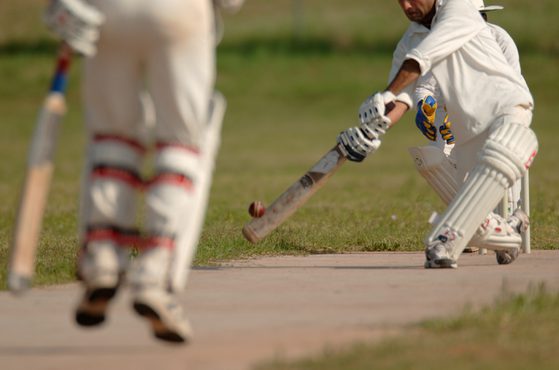The world of sport is no stranger to security threats. From pitch invasions to crowd disorder, safety has always been a key concern for event organisers — yet now, ‘Martyn’s Law’ raises the bar significantly.
Officially known as the Terrorism (Protection of Premises) Act, Martyn’s Law aims to ensure that all public venues — including sports grounds, arenas and recreational facilities — are better prepared to respond to the threat of terrorism.
Since receiving Royal Assent on 3 April 2025, the Government has indicated that there will be an implementation period of at least 24 months before the Act comes into force. During this time, further Home Office guidance will be published around the obligations placed on premises and events, including sports venues.
We understand the challenges that this new legislation presents to sports organisations — from compliance with stringent security protocols to managing its financial and operational impact.
Our specialist Martyn’s Law and anti-terrorism team is here to guide you through all the legal and regulatory implications of Martyn’s Law — helping you to meet the necessary requirements while minimising risk and disruption.
Here, Catherine Forshaw explains what sports clubs and event organisers need to know about Martyn’s Law.
Martyn’s Law — tiers and venue sizes explained
Martyn’s Law introduces a tiered framework for terrorism preparedness based on venue size.
- Standard Tier — applies to venues with a capacity of 200 to 799 people. Such venues will be required to take action to reduce the risk of harm being caused to individuals in the event of a terrorist attack, including having appropriate policies and incident response plans in place and training staff in the execution of such policies.
- Enhanced Tier — applies to venues or events with a capacity of 800 or more. Such venues or events face more stringent obligations aimed at reducing the vulnerability of premises or events to acts of terrorism, including the preparation of formal risk assessments and detailed security planning. They may also require physical protective measures such as surveillance systems, security barriers and screening protocols.
Legal & regulatory implications for sport
Statutory Duty of Protection
Under Martyn’s Law, sports venues have a legal duty to assess the risks posed by terrorism and implement proportionate security measures.
This includes:
- Conducting regular risk assessments.
- Implementing emergency response procedures.
- Providing counter-terrorism training for staff, stewards and contractors.
- Ensuring robust security measures, from access control to surveillance systems.
We can help you to navigate these requirements by providing:
- Risk assessments, tailored to your venue’s size and type.
- Assistance with developing security plans and ensuring alignment with regulatory guidelines.
- Advice on staff training and compliance with the law’s specific obligations.
New enforcement mechanisms
Martyn’s Law establishes a new regulatory framework to enforce compliance. Any failure to your legal obligations could result in civil penalties or criminal liability — especially in the event of an attack or security breach.
This brings new legal exposure to sports clubs, governing bodies and event organisers, who must now consider terrorism preparedness as a central part of their legal risk management.
We can help you to understand the regulatory landscape by:
- Advising on penalties for non-compliance and potential legal consequences for your organisation.
- Assisting in communicating with regulators to address compliance gaps and mitigate penalties.
- Offering legal representation in the event of a regulatory investigation or prosecution related to security failures.
Practical impact on sporting events
Matchday operations
Major stadiums like Wembley, the Etihad and Twickenham will fall into the Enhanced Tier, requiring robust infrastructure and procedures.
Such venues are likely to need:
- Enhanced surveillance and entry screening.
- Upgraded crowd management protocols.
- Multi-agency emergency response planning.
At the grassroots level, even non-league football grounds, amateur rugby clubs and local athletics facilities may fall into the Standard Tier — bringing basic obligations such as staff training and evacuation plans.
Fan experience
There’ll also be noticeable changes for spectators. Increased bag checks, longer entry times, visible security presence and restricted access zones may become the norm — even at lower-league or community matches.
Balancing this with the need to maintain a welcoming, inclusive and enjoyable environment will be one of the key challenges for event organisers.
Financial and logistical challenges
For elite clubs with dedicated security teams and budgets, compliance may be manageable. However, for lower-league teams and community sports organisations, the financial cost and resource burden could be significant.
There’s growing concern across the sector about how smaller clubs will meet these obligations without external funding or practical support.
Any failure to do so could risk:
- Reduced fixture hosting capacity.
- Event cancellations.
- Exclusion from competition frameworks due to non-compliance.
Collaboration & culture change
Martyn’s Law places a strong emphasis on collaboration between clubs, local authorities, emergency services and national counter-terrorism agencies. This marks a cultural shift in how clubs are expected to operate — requiring a move from isolated event planning to integrated, multi-agency security strategies.
It also calls for a broader cultural change — embedding terrorism awareness and emergency preparedness into the day-to-day operations of sports clubs, from senior executives to part-time stewards.
A safer future — but at what cost?
Martyn’s Law has the potential to make the UK’s sports venues among the safest in the world. By mandating better training, planning and response systems, it could save lives and prevent future tragedies.
However, the law also presents significant challenges, particularly for smaller sports organisations. As implementation looms, the world of sport must prepare not only to comply with new legal standards but also embrace a broader shift in how safety and security are understood and prioritised.
For now, the key message is clear — security is no longer optional. It’s a legal obligation.
Talk to us
If you’d like more information on how this ruling could affect your organisation or policies, our team is here to help.
Talk to us giving us a call on 0333 004 4488, sending us an email at hello@brabners.com or completing our contact form below.




